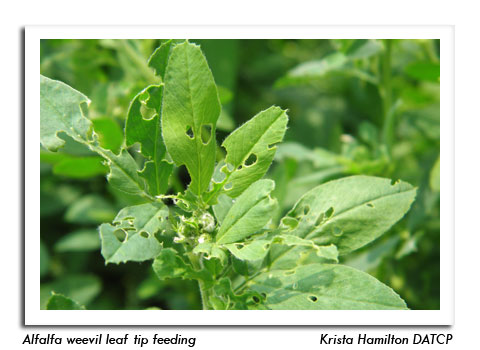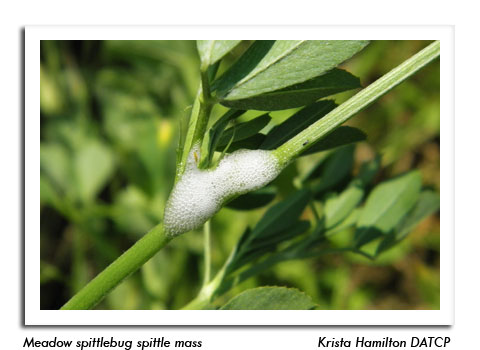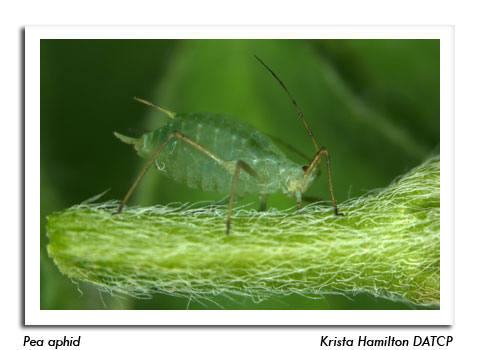
 |
|
|
Forages & Grains
Volume 63 Number 4 Date 05/24/2018 ALFALFA WEEVIL - Larval counts in the western area of the state remain low. Alfalfa surveyed in Buffalo, La Crosse, Monroe, Pepin and Trempealeau and Vernon counties contained only 1-4 newly-hatched weevils per 100 sweeps, and larvae still had not emerged in most fields. Routine scouting for this pest should be underway across southern Wisconsin and continue through early second-crop regrowth. Alfalfa sampling in the northern counties?Wausau area and northward?can begin next week. MEADOW SPITTLEBUG - Nymphs and their characteristic frothy spittle masses were observed in alfalfa earlier this week. Populations are currently less than four per 100 stems. PEA APHID - Surveys found a range of 5-85 aphids per 100 sweeps and an average of 40 per 100 sweeps, a nearly three-fold increase over the 14 per 100 sweeps average noted last week. Pea aphid populations increase most rapidly at temperatures around 65°F, and severe early-season infestations can cause stunting of the first crop and impact subsequent cuttings. This insect is also suspected of transmitting certain alfalfa virus diseases. TARNISHED PLANT BUG - Counts of this insect are low and range from 1-23 per 100 sweeps, with an average of 12 adults per 100 sweeps. The first small nymphs were collected from La Crosse County alfalfa on May 23. GRASS SAWFLY - Low numbers of these striped larvae have been found in scattered alfalfa fields. The caterpillar-like worms are the immature form of the grass sawfly, an insect belonging to the bee and wasp order, Hymenoptera. The larvae, which resemble true armyworms, feed on grasses and are not considered economically important. -- Krista Hamilton, DATCP Entomologist 





|
|
|